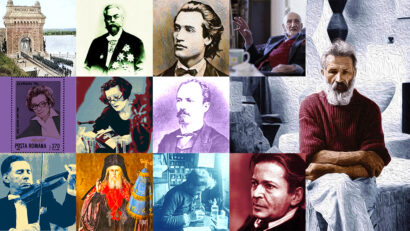Physician Nicolae C. Paulescu, the discoverer of pancreine
Romanian physician Nicolae C. Paulescu is best know for patenting pancreine, patenting pancreine, a pancreatic extract containing insulin

Steliu Lambru, 29.02.2020, 12:12
The history of Romanian medicine boasts many outstanding figures, such as Gheorghe Marinescu, Victor Babes, Ioan Cantacuzino, George Emil Palade or the Minovici brothers. One such personality was Nicolae C. Paulescu, a reputed physiologist, known for his important contribution to the discovery of the basic treatment for diabetes. Paulescus great discovery was pancreine, the anti-diabetic hormone secreted by the pancreas, which he obtained from the pancreas of a dog.
Nicolae Constantin Paulescu was born on November 8, 1869 in Bucharest and died on July 19th 1931. He was the son of a merchant and a housewife. He graduated from an elite high school in Bucharest, the Mihai Viteazul College, where he showed a particular interest in sciences and foreign languages. In 1888 he left to Paris to study medicine and in 1897 he became a physician. He worked in several hospitals in Paris, and between 1897 and 1900 he was a junior physician at the Notre Dame du Perpetuel-Secours hospital, and the right hand of the famous Lancereaux. During the same period he worked for the Journal de Medecine Interne. For a year he also attended the courses of biologic chemistry and general physiology at the Paris Faculty of Science, and in 1899 he got a PhD degree in sciences. He got another PhD degree in 1901, at the University of Paris.
In 1900, Nicolae Paulescu returned to Romania and became a professor of physiology at the Faculty of Medicine and director of the internal clinic of the Saint Vincent de Paul hospital in Bucharest. Paulescu started his research activity with the metabolism of sugars, blood coagulation and the sudden death mechanism. In 1906 he developed a method to extirpate the pituitary gland in dogs, which would subsequently be used in human patients too. At the July 23rd 1921 session of the Biology Society, Nicolae Paulescu presented in four communications the results of his research into the action of the pancreatic extract in cases of diabetes. Paulescu published his discovery, which he called “pancreine” in the Belgian specialized magazine Archives Internationales de Physiologie, in August 1921.
Together with diabetologist Constantin Ionescu-Targoviste, a correspondent member of the Romanian Academy and director of the Paulescu Institute in Bucharest, we tried to highlight Paulescus contribution to the discovery of the treatment for diabetes:
“Pancreine is the pancreatic hormone extracted by Paulescu based on his on method, at first from the pancreas of a dog, and then from other animals. That was the anti-diabetic hormone that researchers had started looking at back in 1890. Paulescu himself, in 1899, when he defended one of his PhD theses in Paris, said in his activity report that he had conducted research to isolate the pancreatic anti-diabetic principle. Paulescu said that diabetes was a disease characterized not only by high blood sugar, but also by an increase in the amount of ketone bodies in the blood and urine, which give the shape of the lipid metabolism. His overall vision was quite strange for the time, because everybody was only preoccupied with high blood sugar.”
Constantin Ionescu-Tirgoviste also talked about the work of the Canadian researchers Frederick Banting and Charles Best from the University of Toronto, who got the Nobel prize in 1923:
“There were two main things that favoured the Toronto team. The first was that James Collip managed to purify the pancreatic extract that would be successfully used in humans. That achievement was indeed the first step beyond what Paulescu had accomplished. The second argument was that Toronto had been visited by a Nobel prize winner in 1920, the Danish August Krogh, whose wife was a diabetic. Visiting the lab of the Scottish researcher John Macleod they made a deal to transfer the possibility of producing the new hormone in Copenhagen. Krogh was the one that proposed the Canadians for the Nobel prize.”
We asked dr. Ionescu-Targoviste what is the difference between pancreine and insulin.
“There is no difference between the two. Actually, I should say there is no difference between pancreine and isletin. The pancreatic extract used by the Canadians after Paulescus model was named isletin. Ive recently got an article by the Belgian physiologist Jean de Meyer, who named it insulin, in 1909. De Meyer had stated that the anti-diabetic hormone isolated from the pancreas should be given that name.”
In 1969, following an international campaign initiated by the Scottish physiologist Ian Murray, the Nobel Committee recognized Nicolae Paulescus merits in the discovery of the treatment for diabetes.






























